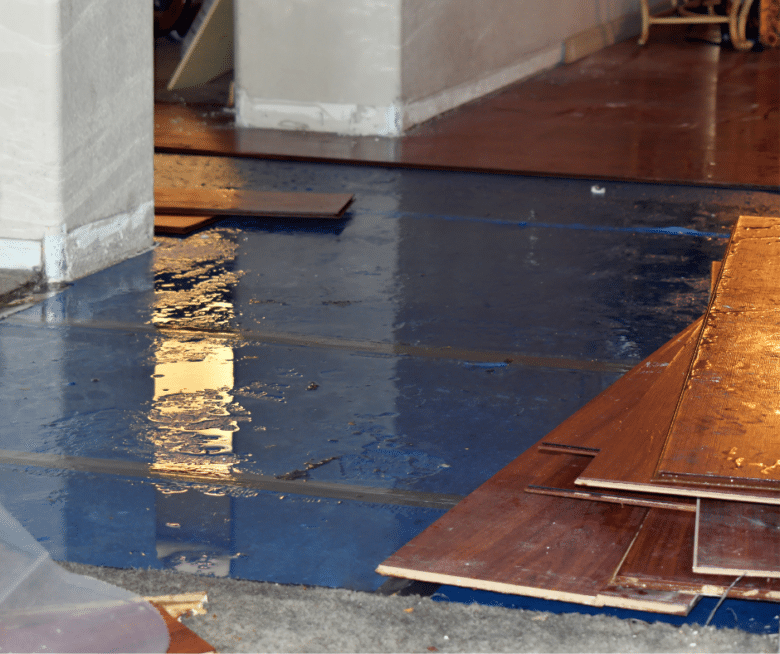
What Are the Red Flags on a House Survey?
Before purchasing a property in the UK, it’s essential to conduct a detailed house survey to evaluate its condition and identify any potential issues. A house survey, or home inspection, assesses the property’s structural integrity, safety, and overall state, giving you insight into any problems that could affect its value or pose risks to occupants.
However, what should you be looking for when you receive the survey report? In this article, we will delve into the key red flags that could signal costly repairs or significant concerns, as well as offer advice on how to proceed if issues arise
Common Red Flags in a House Survey
The type of survey you choose will affect how detailed the report is. A Level 2 survey, also known as a Homebuyers Survey, is the most common and uses a traffic light system to flag issues, with red being the most serious defects that require urgent repair or replacement. A Level 3 survey, also known as a Building Survey, provides a more detailed analysis of the property’s structure and condition. This is also recommended for older or poorly maintained properties due to its in-depth evaluation.
Common Red Flags Found on a House Survey
Here are some of the most common and concerning red flags that a surveyor might identify during a property survey:
Structural Movement and Subsidence
Structural movement, often characterised by cracks in walls, uneven floors, or misaligned doors and windows, can indicate issues with the foundations of the house. Subsidence, which occurs when the ground beneath a property sinks, can cause significant structural instability and is costly to remedy.
Signs to look out for:
- Large cracks, especially around windows and doors
- Uneven floors
- Doors and windows that don’t close properly
How to address: If subsidence is found, you’ll likely need to involve a structural engineer for a more detailed assessment. Depending on the severity, this could involve underpinning the foundations, which is expensive and time-consuming.
Damp and Mould
Damp is one of the most frequent red flags found in house surveys. It can result from poor ventilation, leaking gutters, or inadequate damp-proofing. Over time, damp can lead to mould, wood rot, and damage to the structural integrity of the property.
Signs of damp include:
- Mould growth on walls or ceilings
- Musty smells
- Discoloration of walls or peeling paint
- Excessive condensation
How to address: The cause of the damp needs to be identified before it can be resolved. You may need to fix roof leaks, gutters, or faulty damp-proof courses. In more severe cases, professional damp-proofing may be necessary.
Roofing Problems
The roof is one of the most important parts of any house, so issues here should not be ignored. A survey will check for problems such as missing or damaged tiles/slates, leaks, sagging, and general wear and tear.
Red flags include:
- Missing, cracked, or loose tiles/slates
- Sagging rooflines
- Evidence of leaks, such as water stains on ceilings
- Inadequate roof insulation
How to address: Roofing repairs can vary from relatively minor to very expensive, especially if a complete re-roofing is required. It’s essential to get a professional roofing contractor to assess the damage and provide a repair estimate.
Electrical, Gas and Plumbing Systems
Older properties may have outdated electrical wiring or plumbing systems that are no longer compliant with modern safety standards. Faulty wiring can be a fire hazard, while old plumbing can lead to leaks and water damage.
Things to look for:
- Faulty switches
- Outdated fuse boxes
- Signs of water leaks or poor water pressure
- Rusted or old plumbing fixtures
How to address: If the survey reveals problems with the wiring or plumbing, an electrician or plumber will need to inspect the property further. Rewiring or replumbing an entire house can be costly, but essential for safety.
Timber and Woodworm Infestations
Timber defects, including wood rot and infestations of insects like woodworm, can compromise the structural integrity of a house, particularly in older properties.
Signs to watch for:
- Tiny holes in wooden beams or floors
- Sawdust-like residue
- Timber that feels soft or spongy to the touch
How to address: Treating timber issues depends on the extent of the damage. In minor cases, insecticide treatments may suffice, but severe infestations or decay might require structural timber replacement.
Drainage and Ground Condition Issues
Blocked drains, poor water runoff, or unstable ground conditions can lead to serious issues, such as flooding or land slippage.
Surveyors may identify:
- Poor drainage systems
- Water pooling around the base of the house
- Ground erosion or movement
How to address: Fixing drainage issues may involve installing or repairing drainage systems, which can be disruptive and costly. Ground stability issues should be assessed by a geotechnical engineer, especially in areas prone to flooding or landslides.
How to Proceed After Identifying Red Flags
When red flags appear on a house survey, it doesn’t always mean you should walk away from the sale.
Here’s how you can move forward:
- Negotiate the price: If the issues are repairable, use the survey report to renegotiate the purchase price, factoring in the cost of repairs.
- Seek expert advice: Consult with specialists such as structural engineers, electricians, plumbers, or roofing contractors to get accurate quotes on repairs.
- Consider your risk tolerance: Some issues, like minor damp or cosmetic damage, maybe less of a concern depending on your budget and willingness to take on repairs.
Advice for Sellers
If a buyer’s survey reveals significant issues, you have several options. You can encourage the buyer to obtain formal quotes and compare them to your own. Based on these estimates, you can negotiate the cost, either by reducing the price or splitting the repair costs. If you choose to carry out repairs, ensure they meet best practices and provide all necessary documentation, including warranties.
If the buyer backs out, you’ll need to consider how these issues might affect future buyers and potentially address them before relisting.
Conclusion
A house survey is an essential step in the home-buying process. By identifying red flags such as structural issues, damp, roofing problems, or outdated electrical systems, you can make an informed decision about whether to proceed with the purchase.
Understanding the scope and severity of these issues can help you negotiate repairs or a price reduction, ensuring that your investment is sound and that your new home is safe and secure. Always consult with an RICS qualified surveyor for an accurate and professional assessment before committing to any property.

